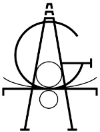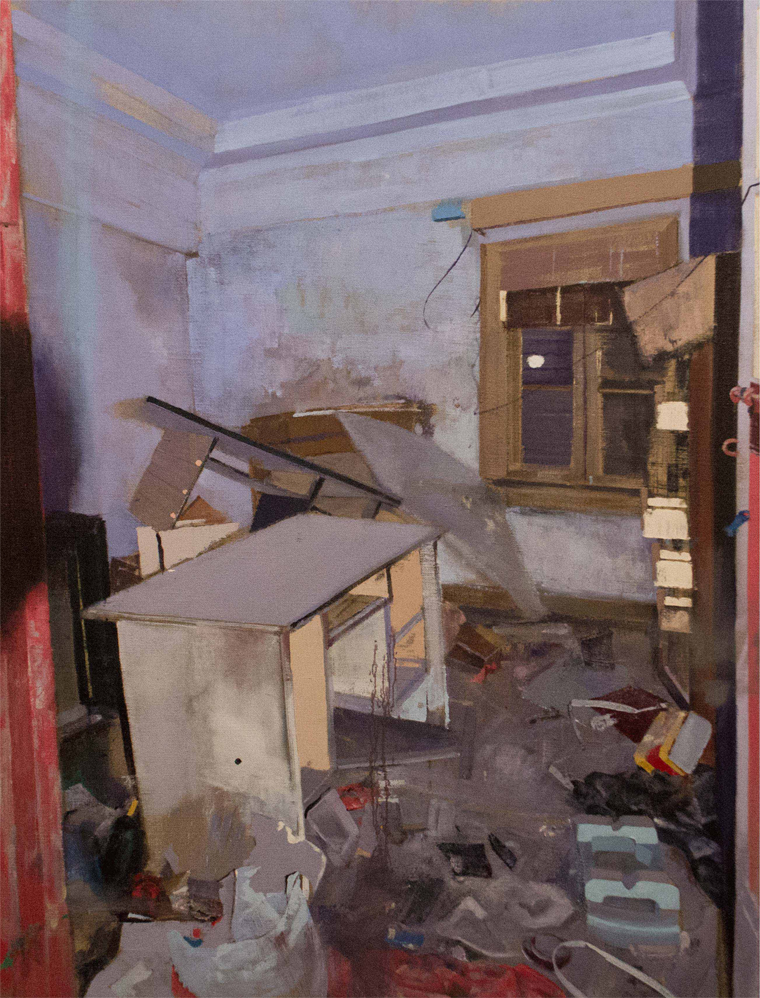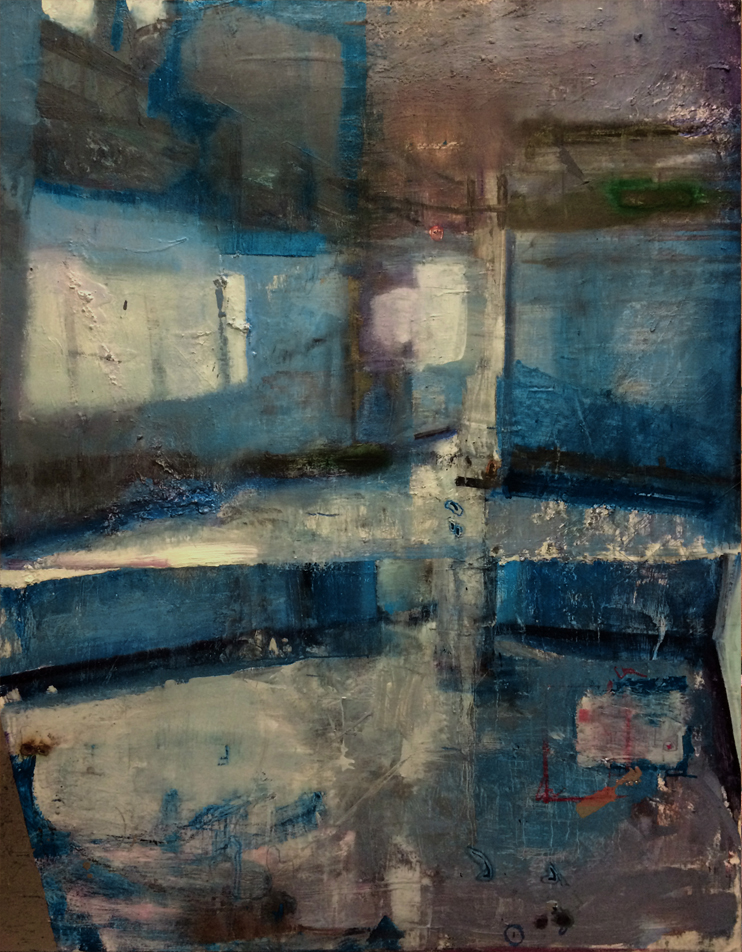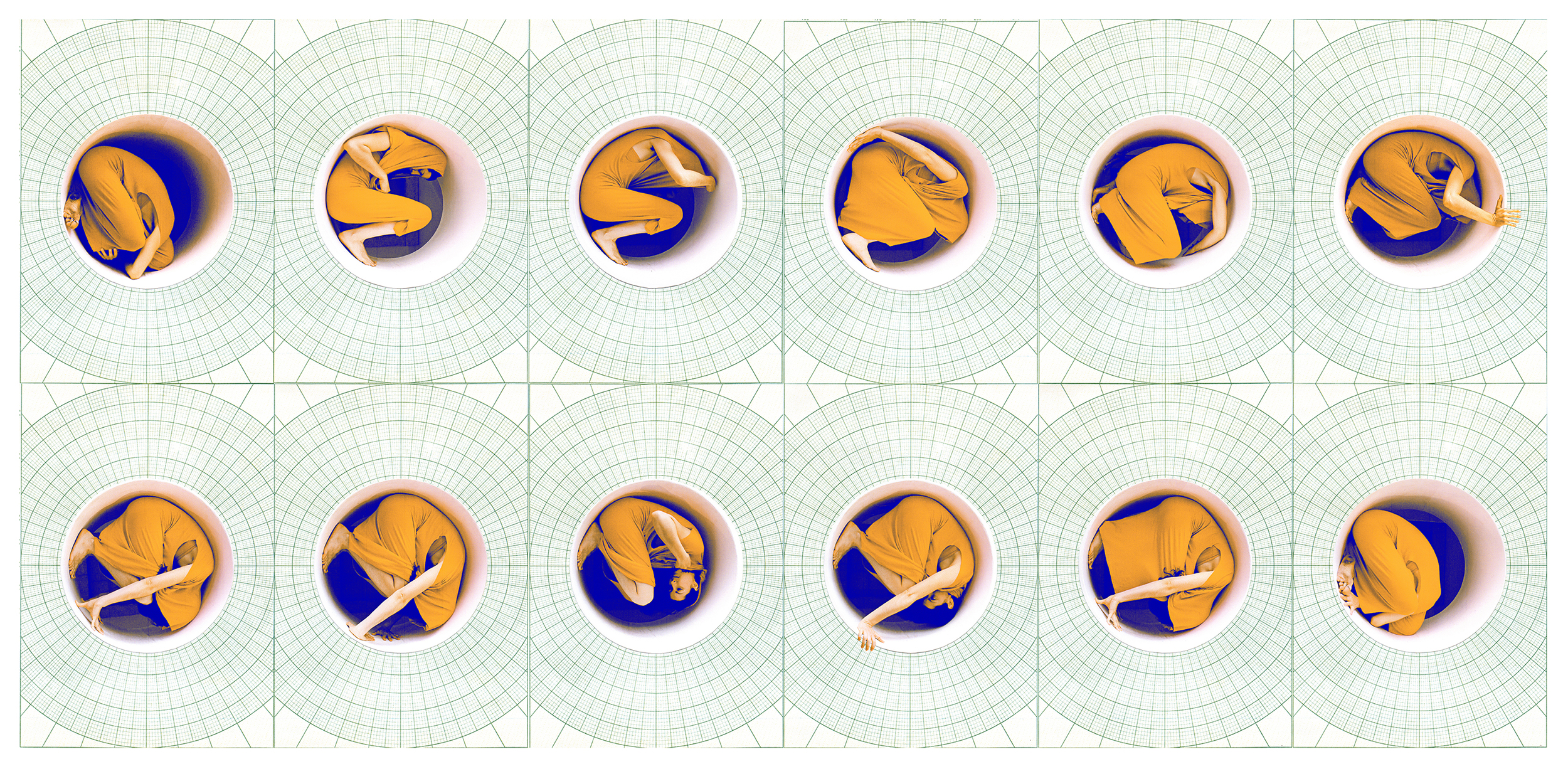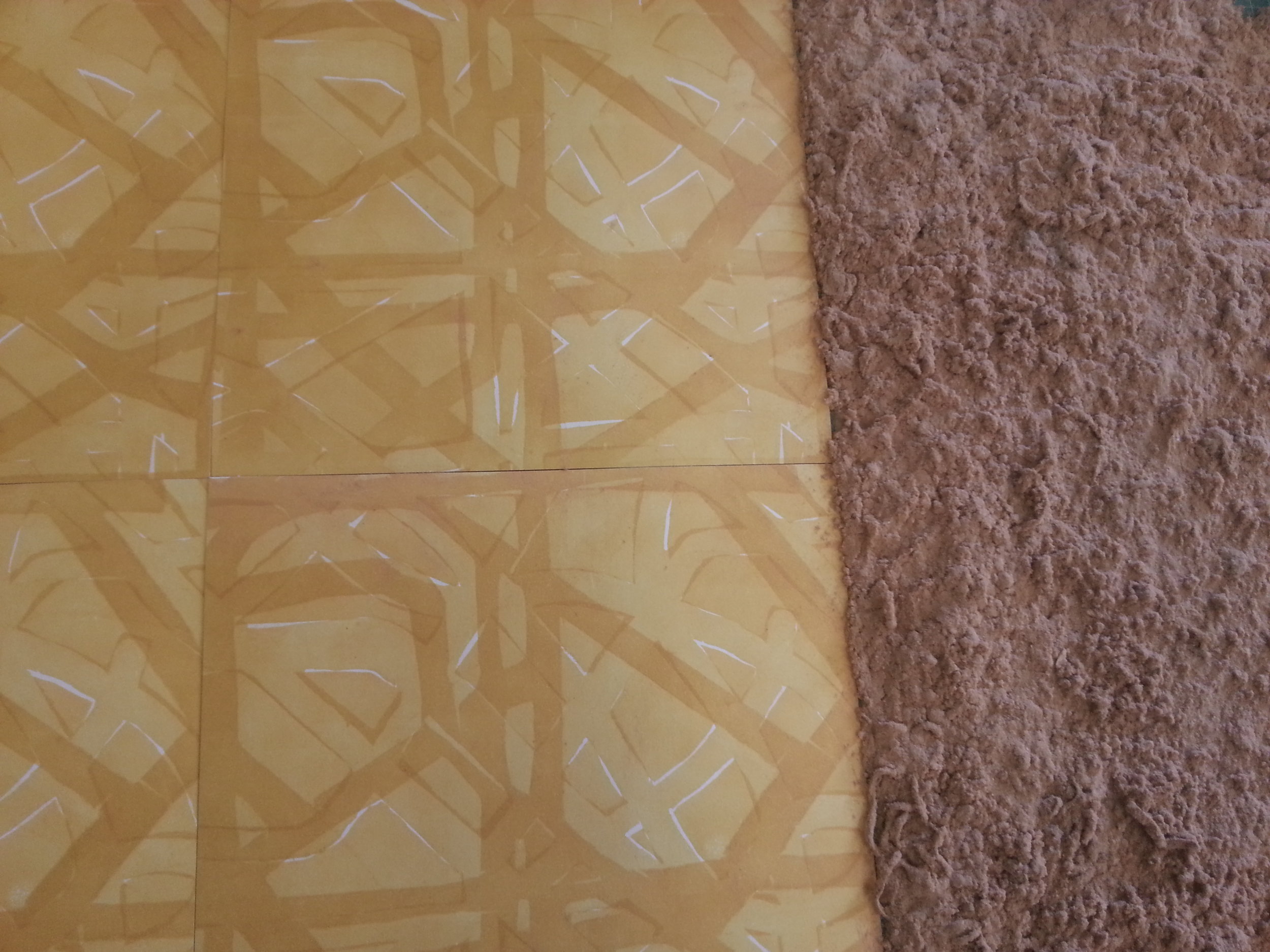Thank you to Chelsea Wine Vault and everyone who attended our Giving Tuesday Silent Auction!
Giving Tuesday Silent Auction @ Chelsea Wine Vault
Congrats to our Winter STAR 2017 Fellows!
RYAN SCHROEDER
My paintings are relics that reflect reality. Through paint, I am exploring space as a phenomenological experience in that the subject matter is assembled through firsthand exploration. I paint abandoned spaces that resonate with me. Some paintings are made perceptually, and others from photographs. However, my main focus is finding a means to visually transmit the dominant psychological feeling of a person or place. I am attracted to spaces that possess a residue of occupation, the visceral sensation of a human presence. These structures provide a frameworkthrough which I am able to have a conversation about decay, neglect, and what it means to be forgotten.
MILCAH BASSEL
My work explores the phenomenology of body-space relations, questioning where experience and imagery converge and crossover. Focused on the space between things the work glides between dimensions, disciplines, and media seeking always to expand the spatial imagination. Ongoing themes intersect the body with architecture and with graphics, the most recent body of work focuses on the body intersecting the grid. Examples for this can be seen in the Body Lexicon series, in A Little Book of Polar Coordinates, and in Grid Piece.
Drawing on countless modernist and contemporary works about the grid by visual artists, writers, and scientists, Grid Piece, a performative sequence spins a poetic, whimsical, and philosophical tale. The imagery, produced over the summer, is an extensive time-lapse sequence where I am seen physically interacting with a large-scale grid. After drawing the grid I proceed to cut into it, performing within as I go along, cutting away until the grid melts into something almost figurative and is then completely diminished; The actions occurring both metaphorically and literally between dimensions.
JOSEPH MARTIN GABRIEL
My curiosities draw upon the boundaries and subtle nuances between what we regard as natural and artificial. Through reconfiguring and reimagining landscapes, I observe the physical environment in different vantage points, from macro to micro-level. Incorporating seemingly incompatible conditions, experiential to experimental encounters, I probe on the tactile, spatial and conceptual topologies within our natural and built environments; putting premium on those that affects how we shape our immediate spaces and how they shape us.
By creating, altering and overlaying various peculiarities, I allow my works to intervene or converse within the context of a given space. Most of my works exist in a temporal condition, producing sculptural installations and images that generate emphasis and contrasts between fragile and rigid; familiar and uncanny; concrete and liminal. My works reflect on the idea of existence and ephemerality where a simultaneous tension is created between something that exudes life and something that shows the lack or absence thereof.
JEREMY SMITH (Key Holder)
My work investigates the relationship between people, objects of display and the interior spaces where they interact. In an effort to describe ourselves, we adorn our personal spaces and develop an image of self through the contents we choose to display in a room. The presentation of these objects helps fabricate an image of the occupant and becomes a depiction of self-narrative. The relationship between the object and its possessor becomes entangled; the memory of the self becomes replaced by the memory of the object and leaves one to question which is ultimately the curiosity? On an intimate level, we are comforted by the objects that we choose to live with, and on a public level, we represent ourselves through the fabricated images we share with others.
The materials used in my work are overlooked, ephemeral and are considered to have little or no value. As I apply my experience with craft to materials commonly dismissed as disposable, these materials lose their insignificance, suggest the elegance of others and appear to be ready-made. Corrugated cardboard, paper and ink are used in various printmaking processes that create a manicured surface that helps transform these trophies or totems from common utility to objects of desire. The surface and form of these objects have separate histories, but come together to have a combined existence in the context of this display. By relying on the power of the original, the representation assumes that character or value through this process of mimesis.
Sentimentality develops into a need or desire that must be sustained or reinforced by the presence of objects. My work questions what we cherish more, the image of the object, the idea of the experience or the object itself? I believe that this desire can be satisfied through multiple sources, but how one displays or expresses this satisfaction is what my work explores.
Poker Night Press Release!!
MEET OUR WINTER & SUMMER 2017 STAR PROGRAM JURORS!
ROB SWAINSTON
Rob is currently Assistant Professor of Art+Design in Printmaking at SUNY Purchase College. Born and raised in rural Pennsylvania, Rob studied art and political science at Hampshire College, and subsequently lived and worked in Central Europe, pursuing postgraduate studies in political science at Budapest’s Central European University. He received his MFA in visual arts from Columbia University in 2006. He attended the Skowhegan School of Painting and Sculpture in 2007, the Marie Walsh Sharpe Studio Program in 2009-10, the Provincetown Fine Arts Work Center (winter 2011-12), the Bronx Museum AIM program (2015), the Robert Blackburn Printshop Fellowship (2012), and is alumnus of the Philadelphia art collective Vox Populi. Rob is a cofounder and master printer of Prints of Darkness, a collaborative printmaking studio in Brooklyn, NY. He has had solo shows with Marginal Utility, Philadelphia (2016,2013); University Galleries Illinois State (2016); Neuwerk Kunsthalle, Konstanz, Germany (2012); Esther Massry Gallery at the College of Saint Rose, Albany, NY (2011); David Krut Projects, NYC (2010); BravinLee Programs, NYC (2010); and Vox Populi, Philadelphia (2008 and 2009). Rob has been in numerous group shows at International Print Center New York (2016,2015,2014,2012,2011), Socrates Sculpture Park, Queens, NY (2013,11); Arlington Arts Center, Arlington (2012); Provincetown Art Association and Museum, Provincetown, MA (2012); Mellon, Brooklyn, NY (2011); NADA Hudson (Canada Gallery), Hudson, NY (2011); Mason Gross Galleries, New Brunswick, NJ (2010); Philagraphika at Seraphin Gallery, Philadelphia (2010); Canada Gallery, NYC (2008); The Queens Museum at Bulova, Queens, NY (2008) and the Frederic Snitzer Gallery, Miami, FL (2006). He has been featured in V-magazine, Art in Print, contemporary Printmaking books as well as the Printeresting, and Art21 blogs.
BARBARA MCLANAHAN
Barbara Hunt McLanahan is the executive director of the Children's Museum of Arts! Barbara has more than 20 years of experience in the arts on both sides of the Atlantic. She has served as executive director for the Judd Foundation, Artists Space, and Visual AIDS in New York City, and Camerawork Gallery + Darkroom in London. She has also been an active volunteer throughout her career, sitting on the board of the African and Asian Visual Artists Archive and the Leisure Services Committee of the Royal National Institute for the Blind in the United Kingdom, as well as participating in Godzilla, a group of Asian American artists and curators, and sitting on the board of ABACA (Arts Benefit All Coalition Alternative) at Satellite Academy.
She joined the board of the Jerome Foundation in Minneapolis in 2007 and in 2006, she was named Chevalier of L’Ordre des Arts et des Lettres by the Republic of France. She has been a panelist and lecturer at museums, non-profit galleries, conferences and colleges in the US and UK, focusing particularly on career options for emerging artists and the changing opportunities facing artist-run alternative spaces.
SUSAN ROSTOW
Susan Rostow is a New York City-based artist, educator and the inventor of Akua™ printmaking inks and accessories. Her one-of-a-kind mixed media sculptural books and prints have been exhibited throughout the United States, Europe and Japan. Her work is in public and private collections including the The Allan Chasanoff Bookwork Collection at Yale University Art Gallery, the Library of Congress, National Print Archives, and the Portland Museum of Art, Oregon. She was awarded a Pollock-Krasner Foundation Grant and served as an Artist in Residence through the New Jersey State Arts Council, Pennsylvania Arts Council, Montana State Arts Council, Alaska State Arts Council, Jamaica Art Center, New York and the Oregon College of Arts and Crafts.
Susan Rostow has made a major contribution to the practice of safer printmaking with Akua, and by teaching printmaking techniques without the use of hazardous materials. In 2012, Speedball Art Products acquired the Akua brand and Susan joined the Speedball team, creating new products and producing instructional videos. She has taught numerous printmaking workshops all over the world and maintains a studio in Brooklyn where she welcomes students.
GA Thanks all the Hudson County Freeholders!
It was our pleasure to present to the Freeholders of Hudson County a limited edition print by Martin Mazorra as a thank you for their support of the 2016 Braddock Park Art Festival!
Ice Cream Social at Guttenberg Arts next week!
Meet our Fall 2016 Residents!
Amie Cunat










My paintings and installations investigate parallels between abstraction and perception. What I mean by perception is the recognition of certain behaviors in objects/events that can formally manifest within abstraction. Embedded in my work are choices that expose, obscure, confine, and mediate the original source. In Clue, Cue, I had the chance to make an installation in the gallery’s windows. While I lived on Orchard Street between 2012-2015, these windows displayed shirts and shoes when it was a men’s clothing store. When conceiving of the installation, I wanted to reassert the functionality of a storefront window taking advantage of all three viewable sides. The resulting wall painting and objects were combined to construct a “reimagined” storefront window, where each side of the entryway installation shared similar zig-zag forms, but differed in their display.
The ways in which I choose subjects for my work varies, but what they all have in common is in their absurdity. When I look for observable events or moments, I have tendency to be drawn to the strangeness of something occurring. This may reflect a certain sense of humor that I wish to express in the works, but it's also because I desire to make evident the importance of the minute through abstract means. Relative to the way I find sources for my abstract paintings, when looking at my work, it is necessary to “stumble upon” and to see what’s “sticking-out”. I want viewers to discover formal and phenomenological idiosyncrasies and at the same time, to give into an experience of finding.
My process involves observing real objects/events then drawing them in my sketchbook. What began as an observation becomes a painterly image or object that is “of” the original experience. Color choice is a negotiation between its formal function as well as its buoyant and comedic tenor. It is important for me to maintain a sense of sarcasm or slang between color/composition within my work. It is within slang that I feel vocabulary reveals “cultural” specificity. The works’ visual experience is playful, but sparse in painterly mark-making. This is because I am interested in developing hand through drawing/cutting (contours developed from adjacent hues). I place significant importance on the interaction between fields of color; therefore, when you see these pieces, there is a simultaneous and holistic affect. In other words, I want figure and ground to achieve equal presence in a given surface.
Óscar Valero Sáez
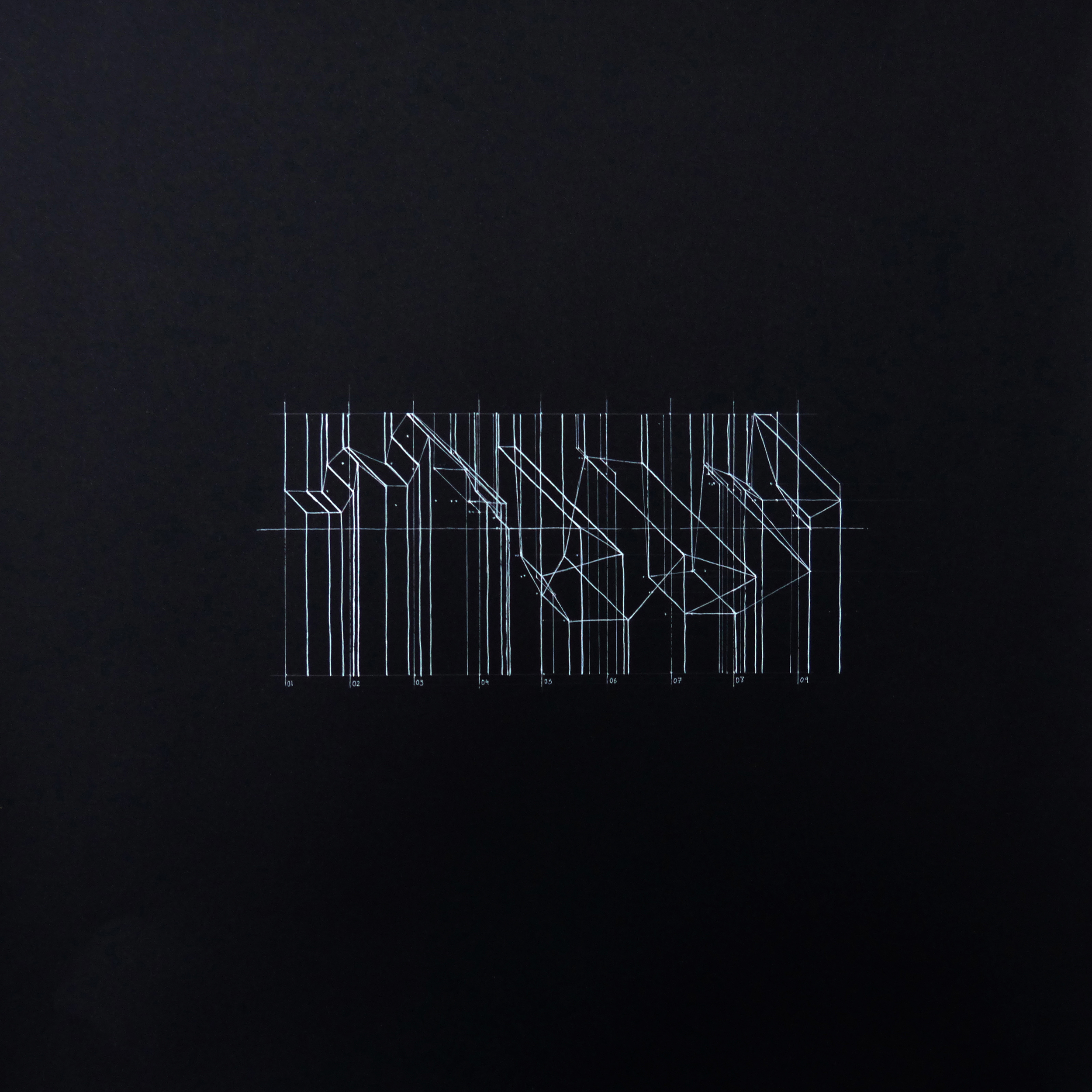
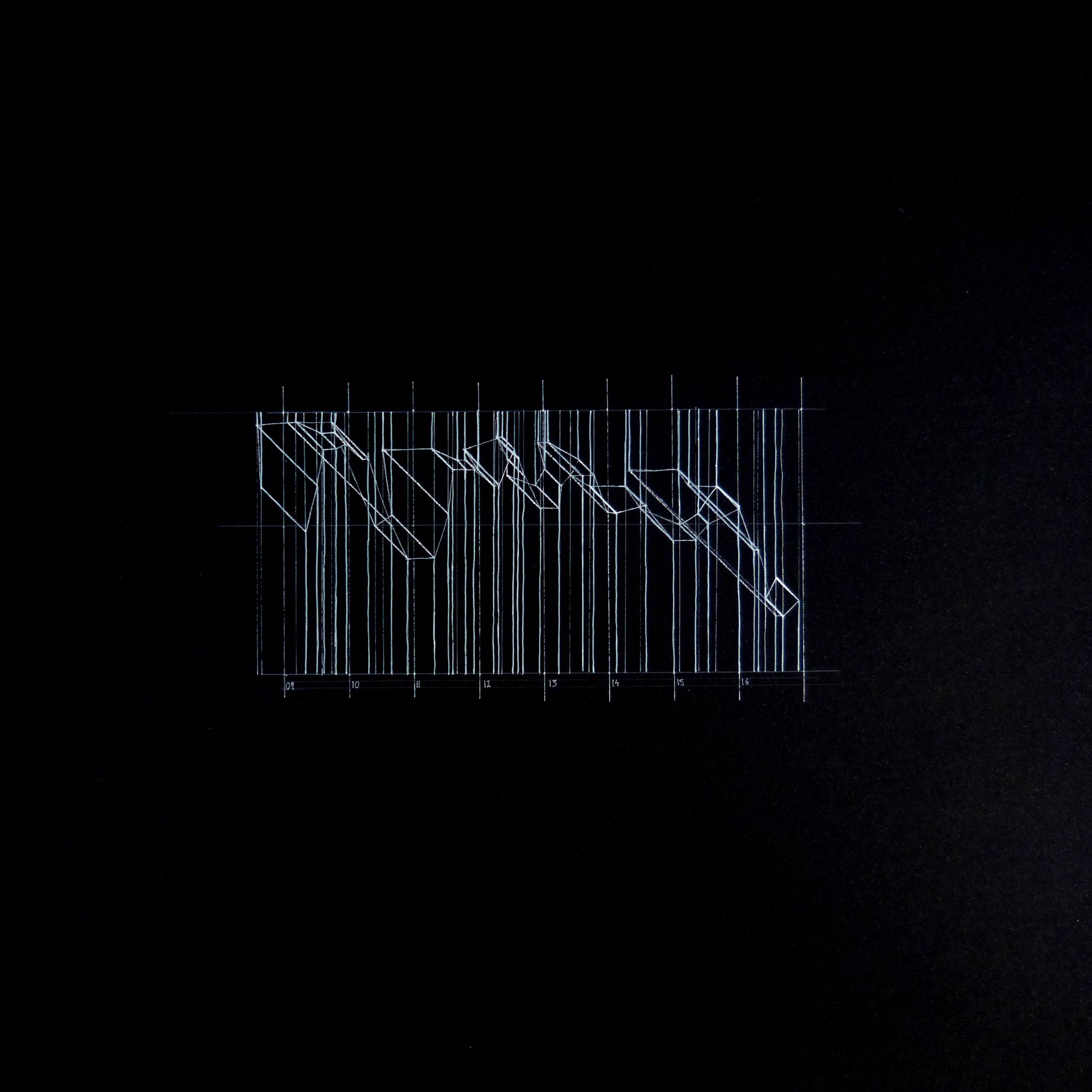
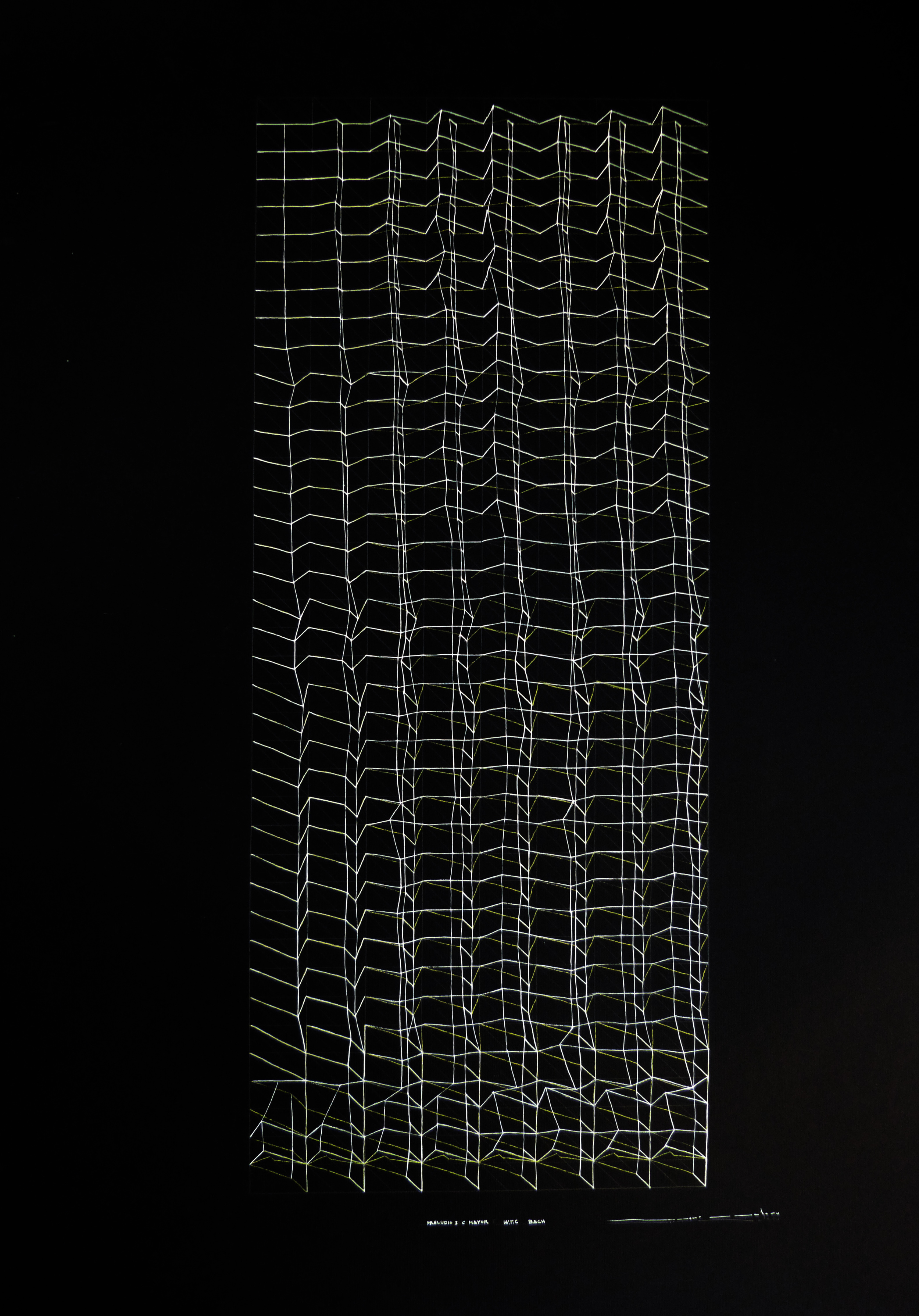
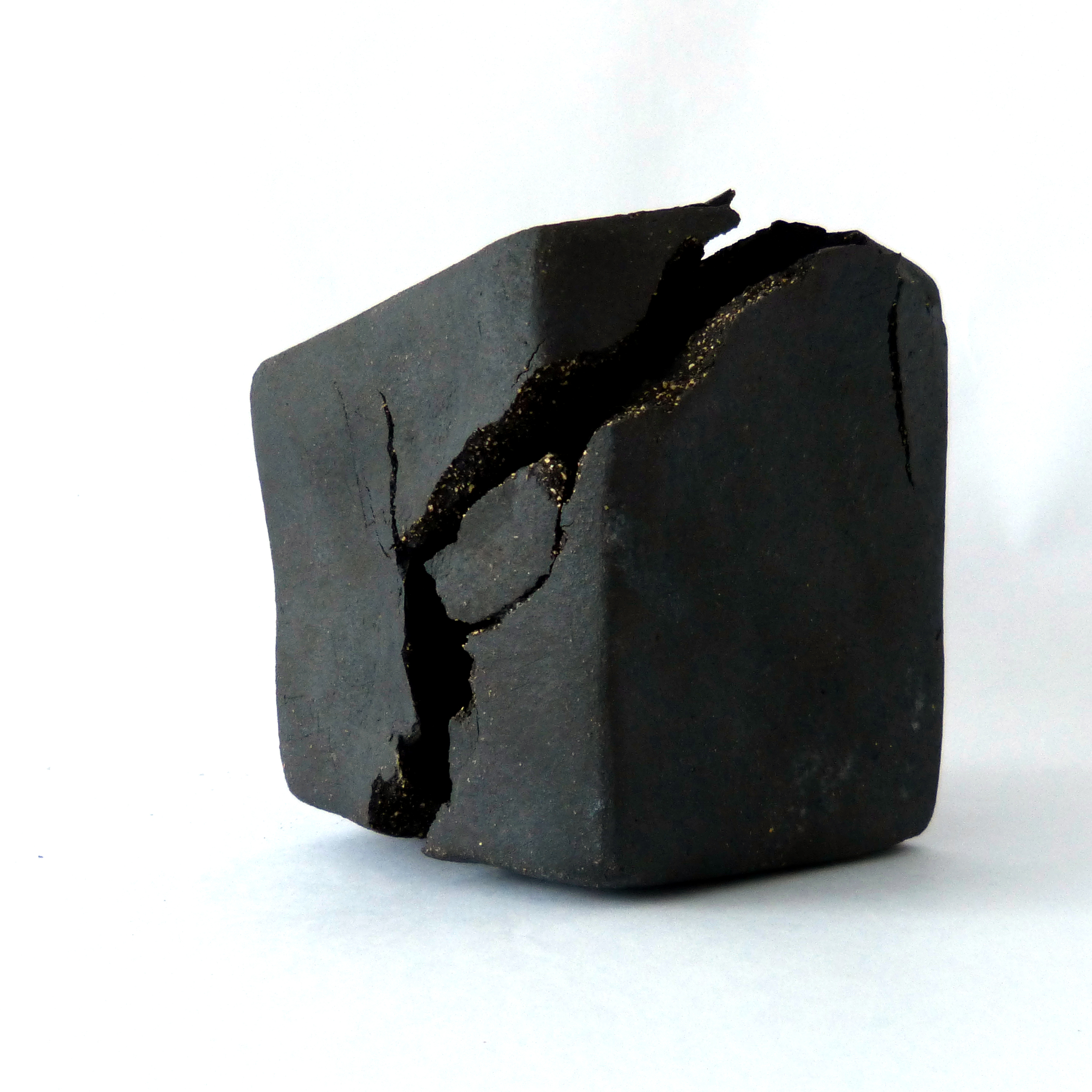

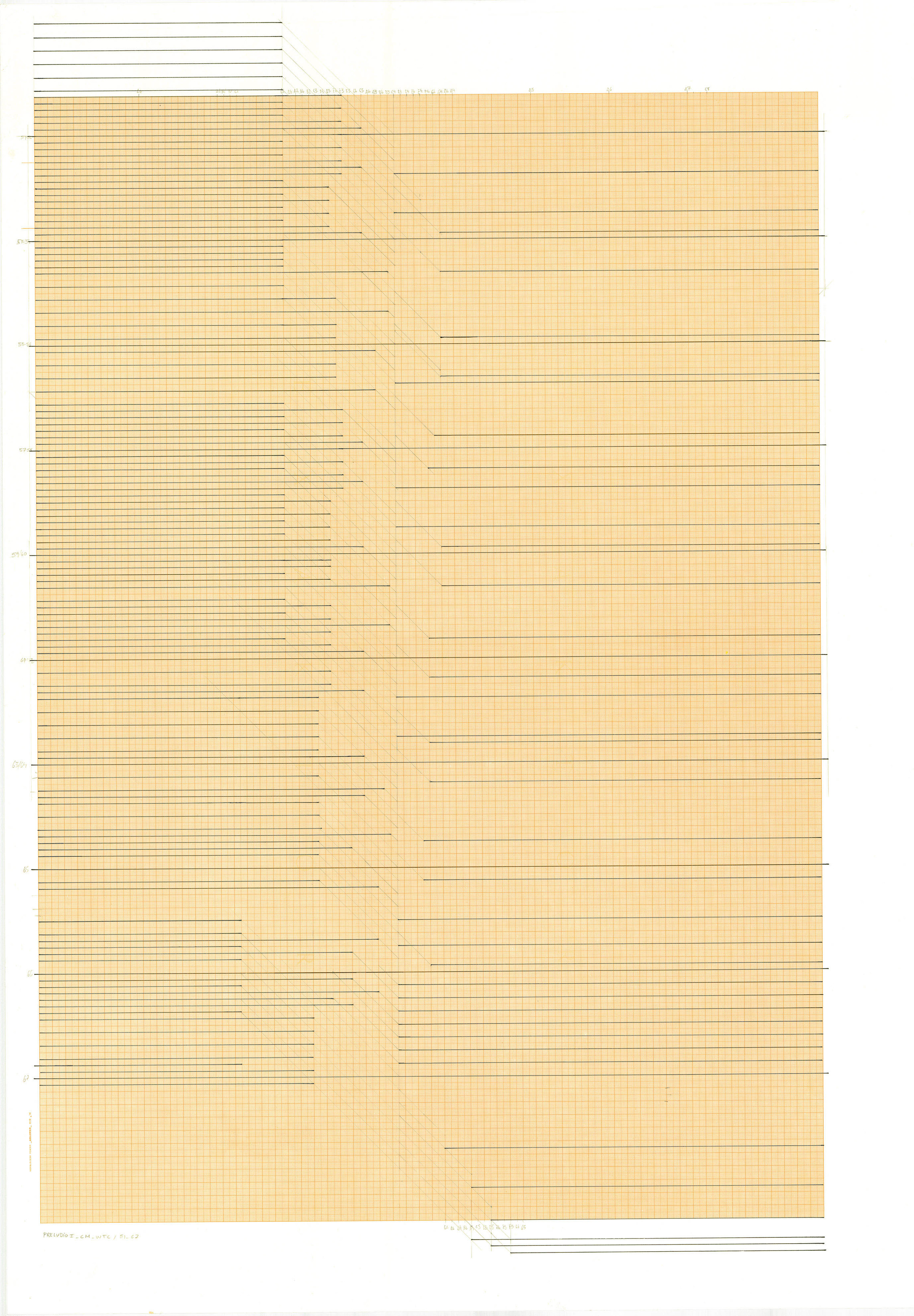
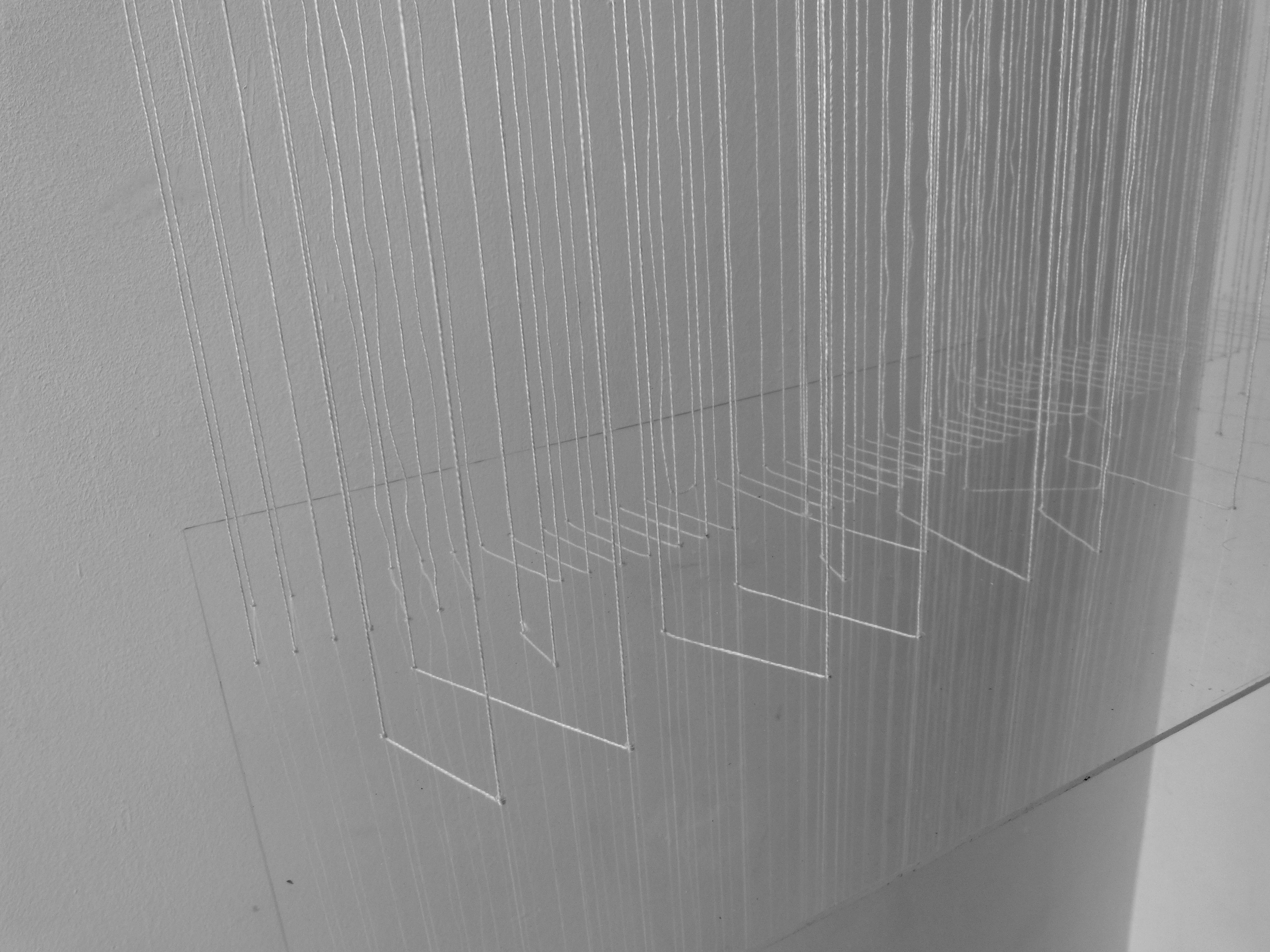
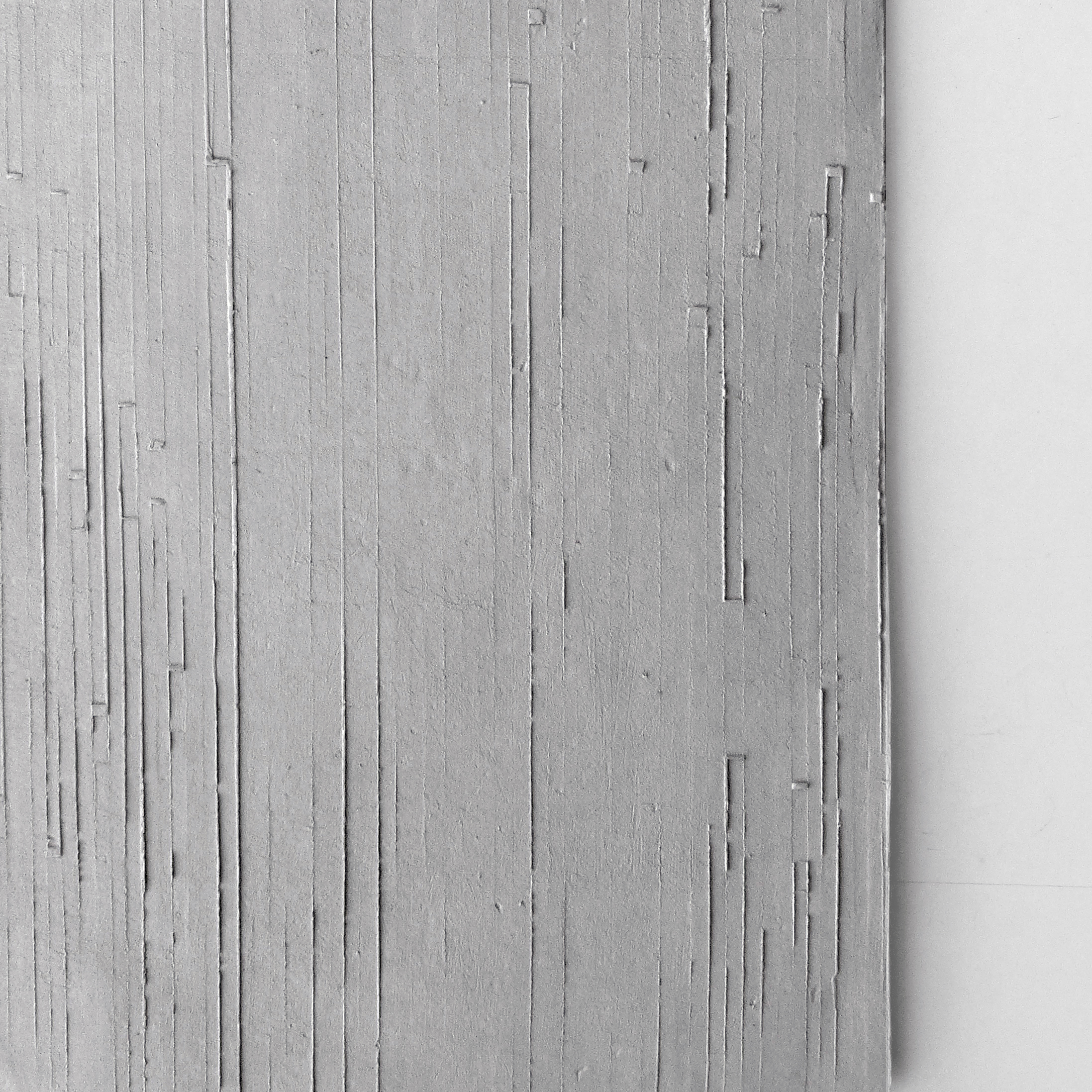
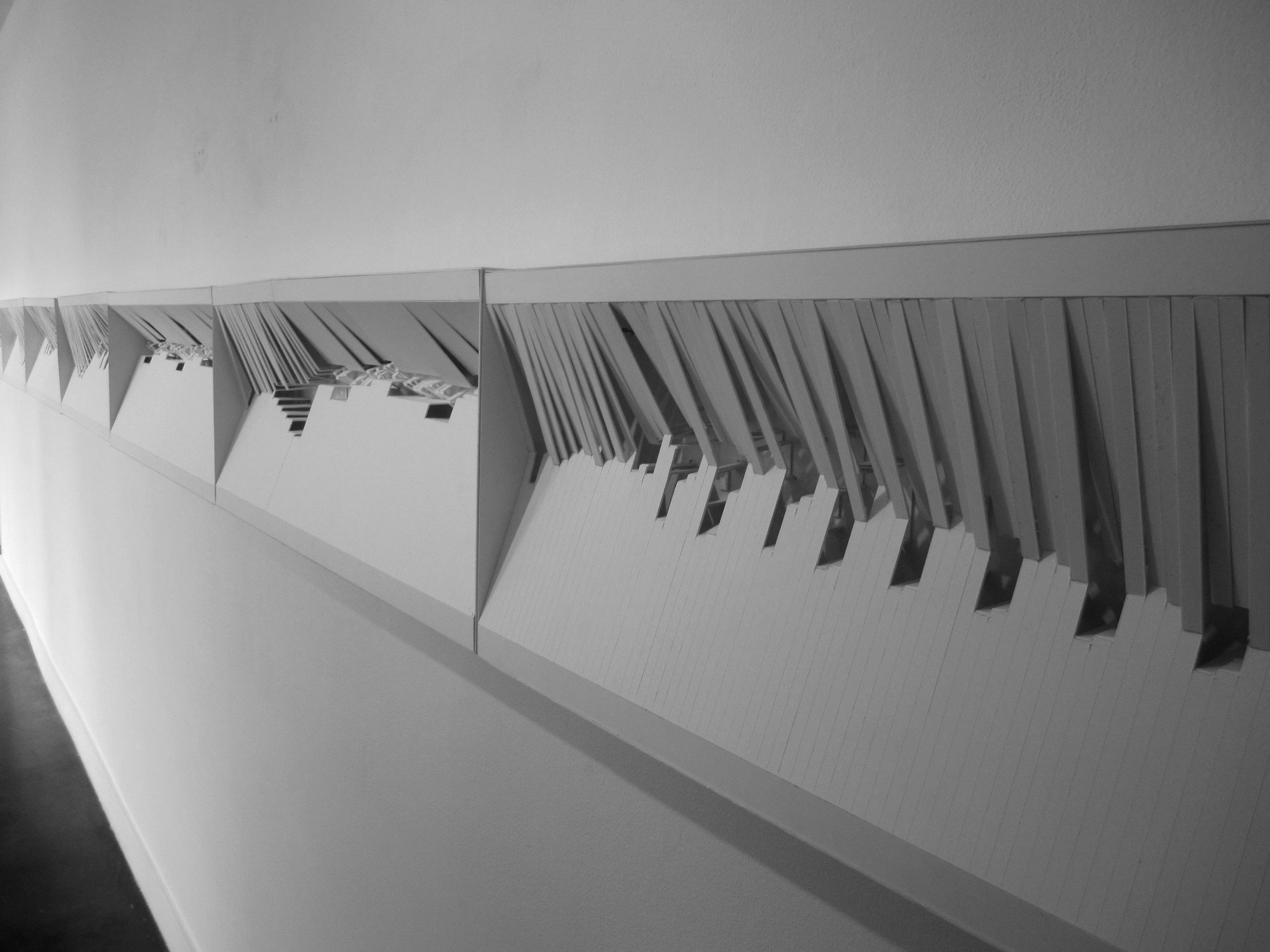

GRAPHIC TRANSPOSITION OF MUSICAL STRUCTURE
I propose to explore alphabets and musical compositions through a visual process.
I analyze them in a graphical way, introducing into the physical world.
Musical and Alphabets constructions are translated into the visual medium where the structure is revealed and occupies a space. My research aims to visualize the process from conception to realization of the structure.
My Current artistic practice explores the musical composition of JS Bach’s “Well tempered clavier” (1722) through a graphical process. I am interested in applying the classical conception of beauty to music —that beauty originates from structure—.
“Well Tempered Clavier” is a collection of preludes and fugues in all 24 major and minor keys. Based on structural rules, the collection can be seen as a tutorial in compositional theory. W.T.C. is a set of short compositions designed to show why specific combinations of notes are harmonic, while others make noise.
The investigation is based on different graphical and spatial variations of the same theme “The24 Preludes”. They are preparatory pieces for the fugues—to warm up the hands—sketches with a transitory character
The classical conception of beauty is as an arrangement of integral parts into a coherent whole, according to proportion, harmony. The Preludes also have this character. Taking a musical pattern, they play with it moving through the score and deforming it spatiality.
The research began with a focus on John Cage’s musical compositions and continues now with Bach. The link between Cage and Bach is that both approached composition in a structural way. They worked out their concepts, applied a structure, and then performed their compositions to find out how they sound. I understand my artistic work in a similar way—not as product or object but as an extended investigation in which the result is the process itself and the objects created are the consequences.
I would like to reveal the beauty of the Preludes through a graphical representation, and explore written music as an open structure where the Score is not approached as musical notation. but as form. Two dimensions of the music presented in the score are coded into a grid: pitch and time.
My work is arranged in series; Working drawings and other visible things:
Black ink on millimeter paper
White ink on black paper
Monochrome two and three dimension pieces using fragile mediums: paper, threads, ceramic.
Preparatory works for conceptualizing 3-dimensional installation
Exposing musical structure through a visual medium, makes conscious the space that music occupies. The Preludes are shown in a global way. They are suspended in time.
Rafael Corzo
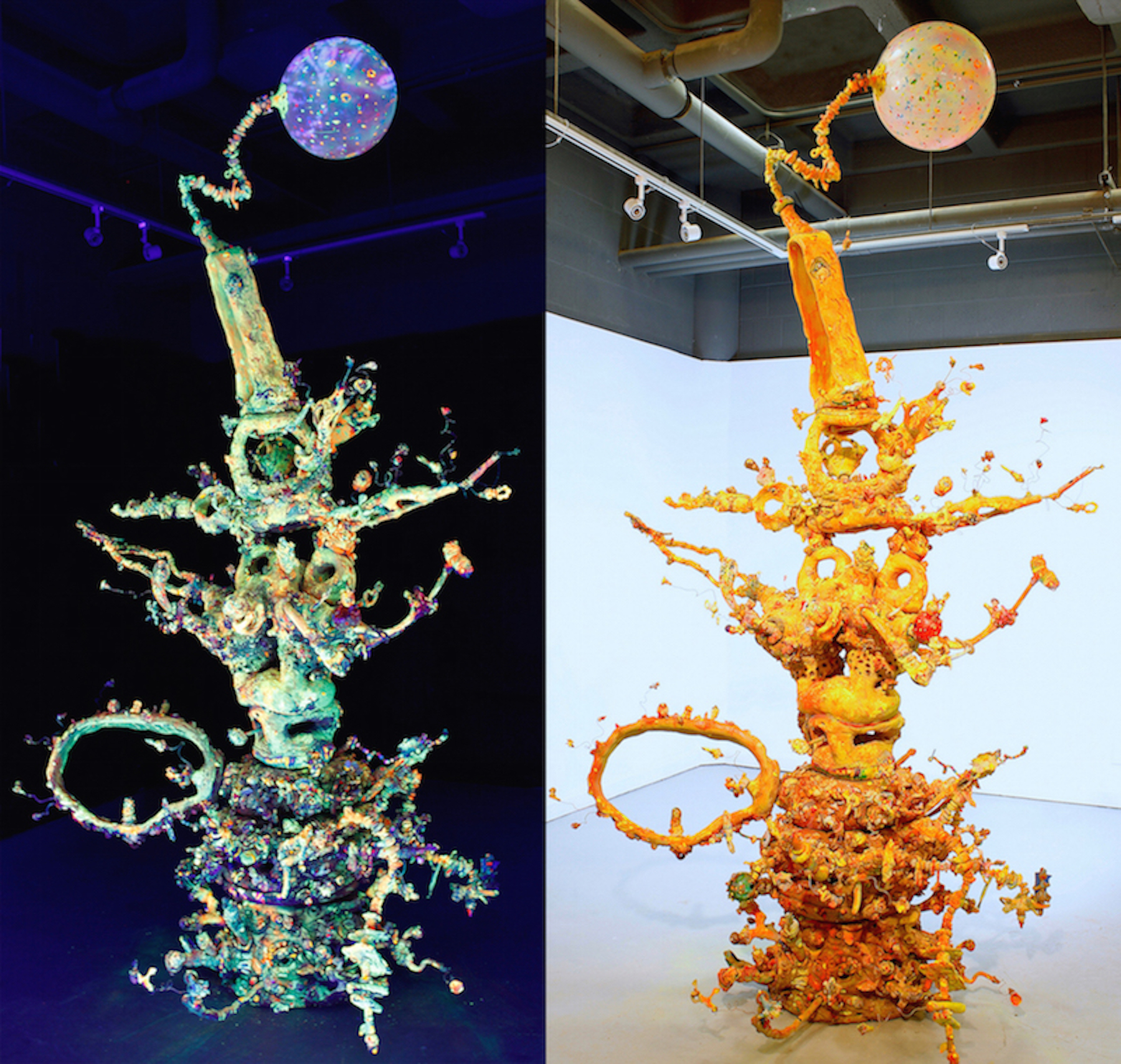


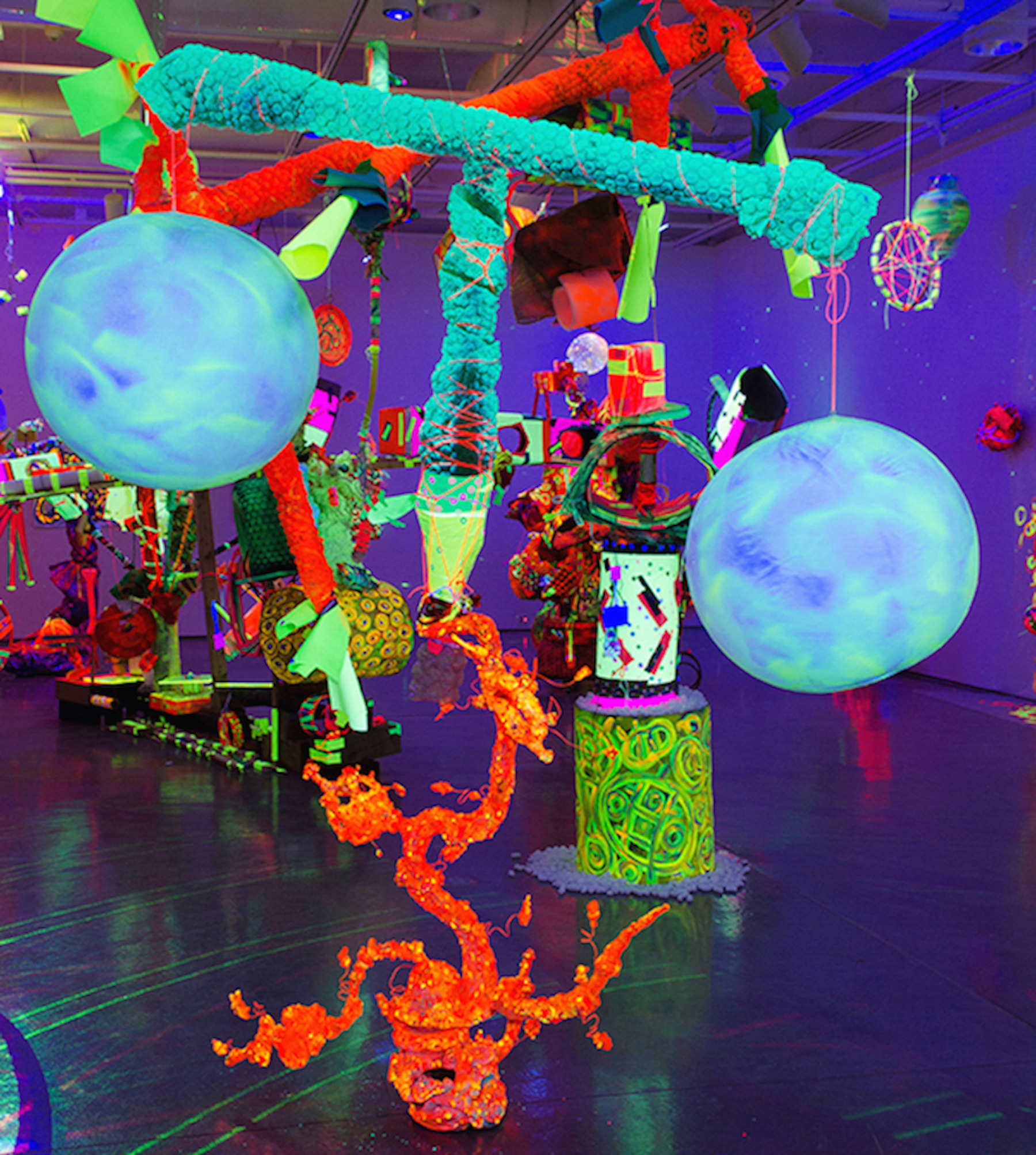
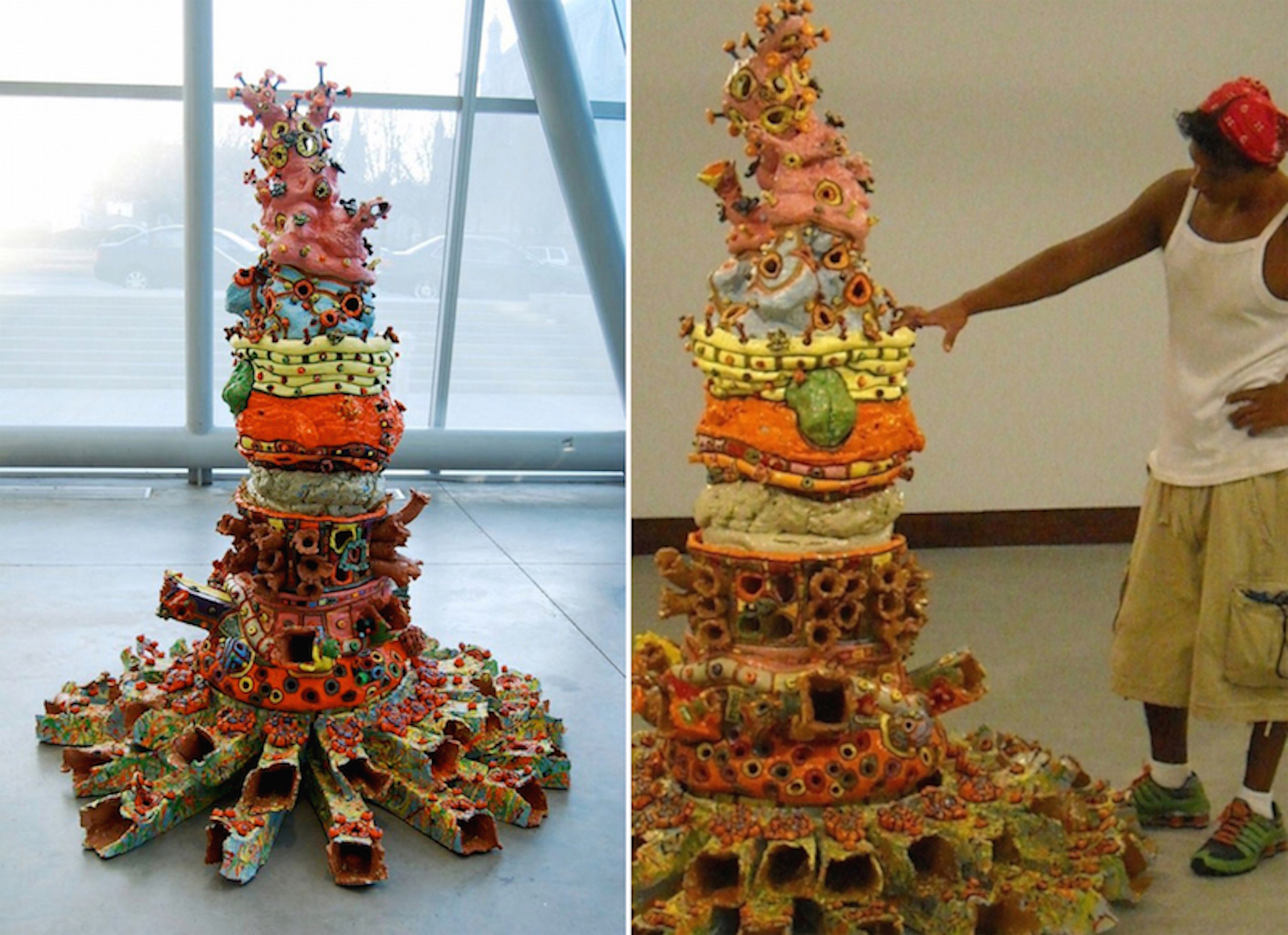
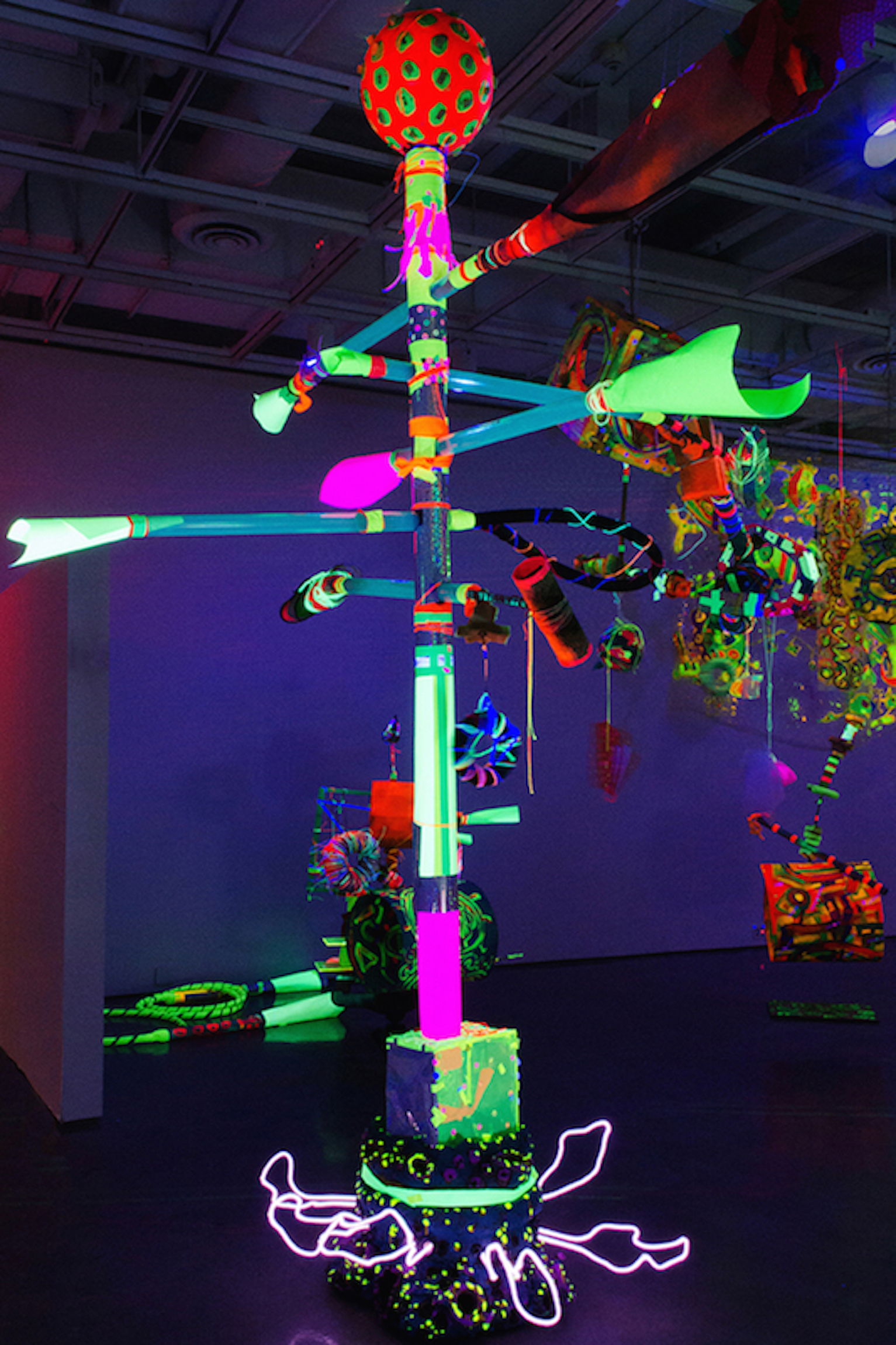
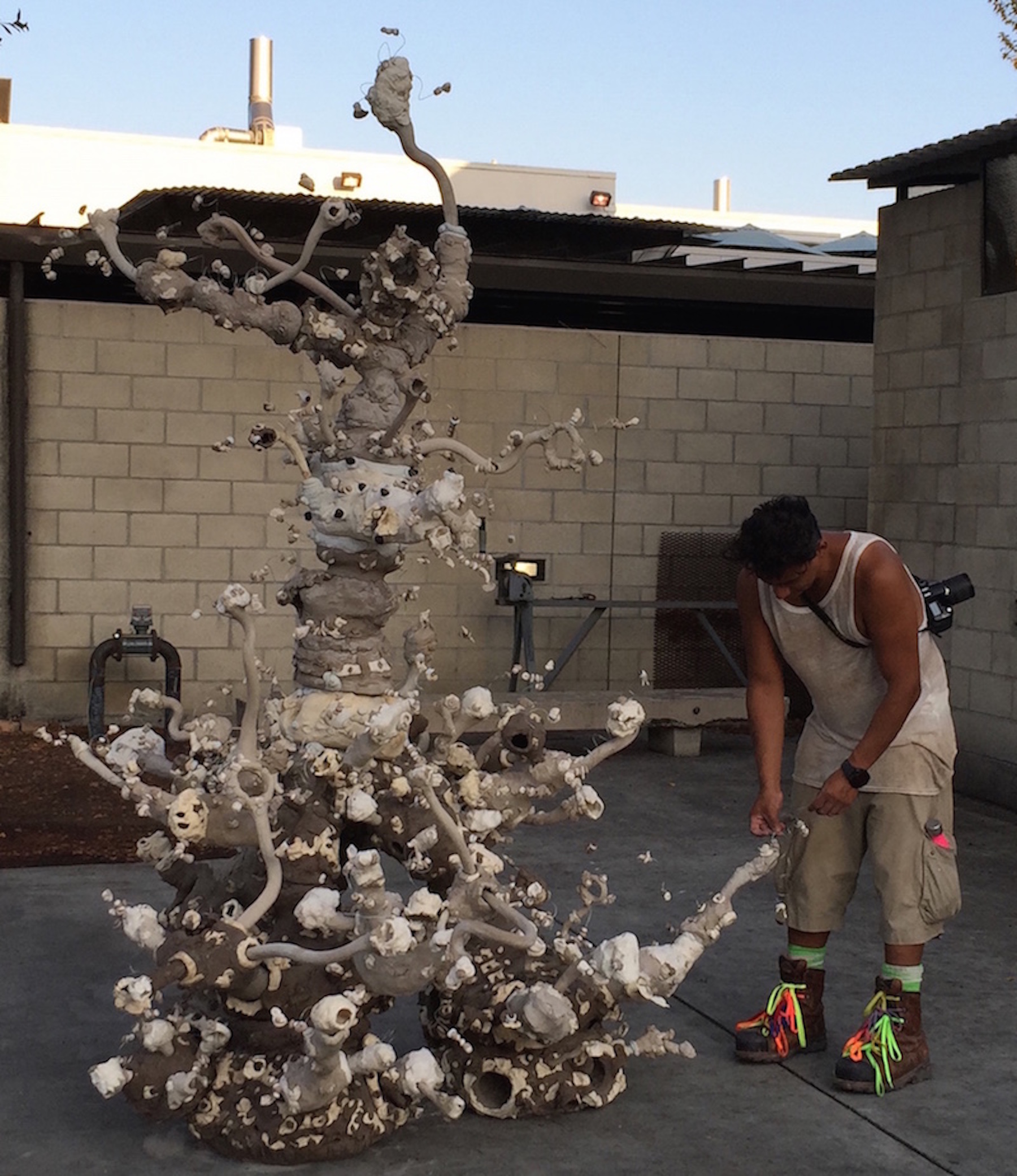
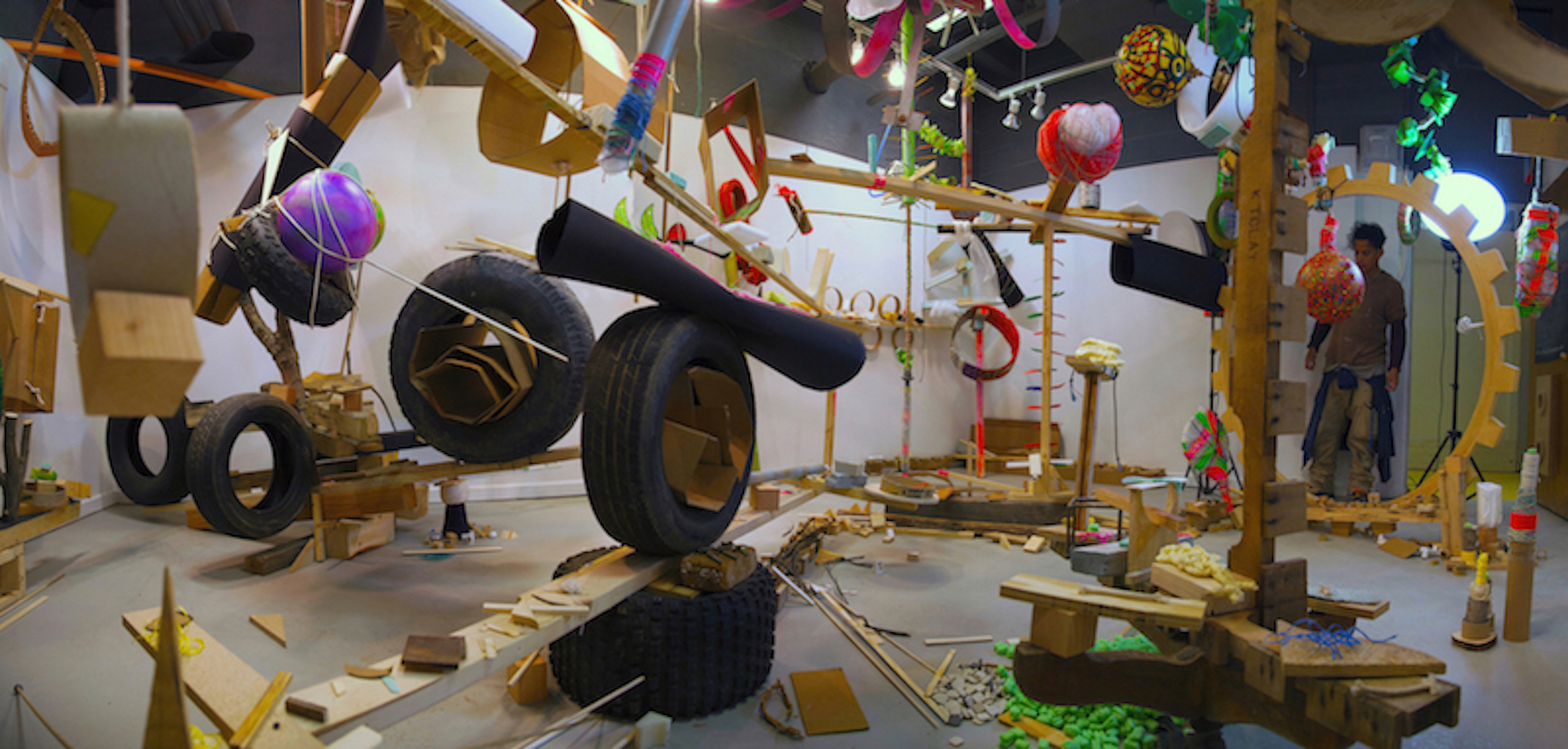
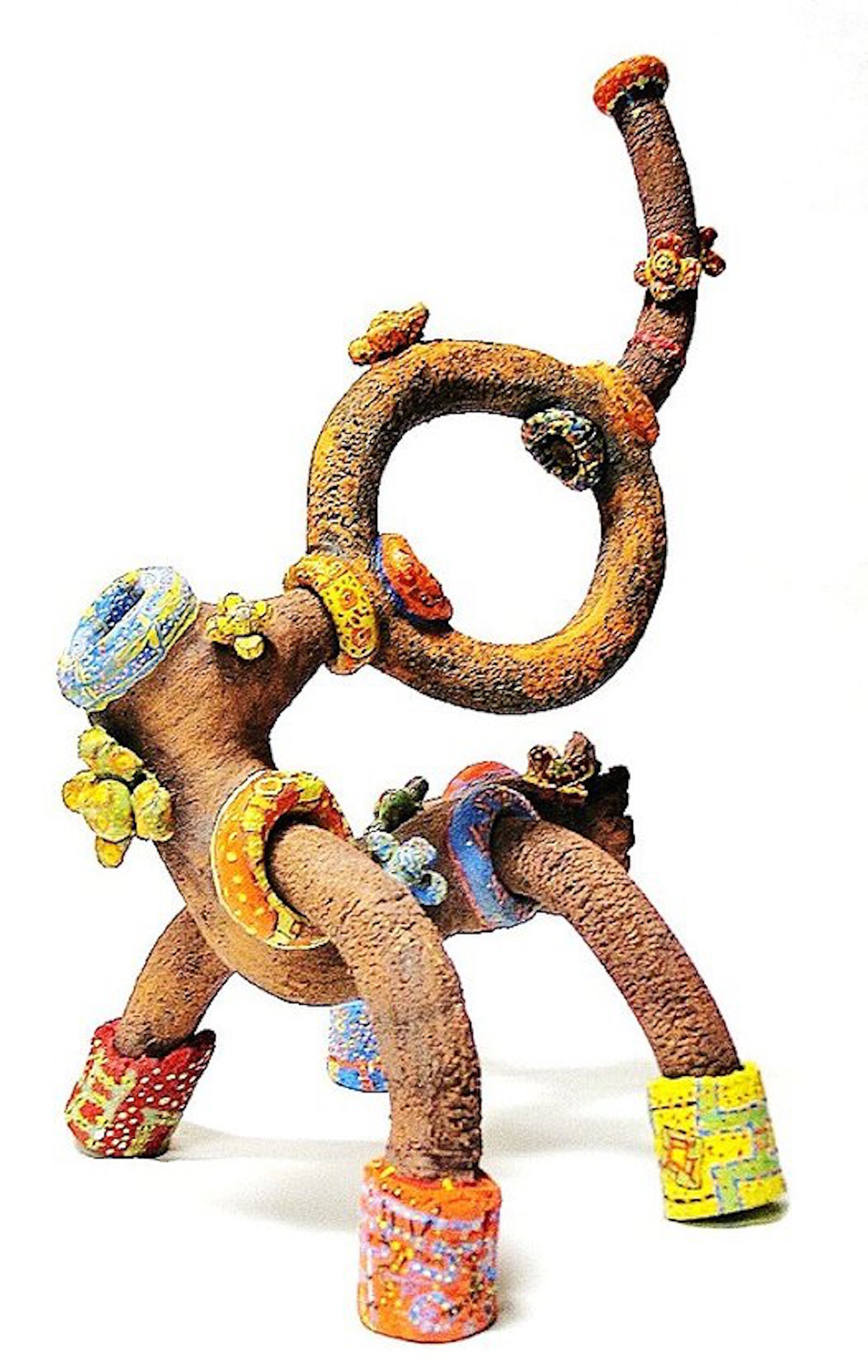
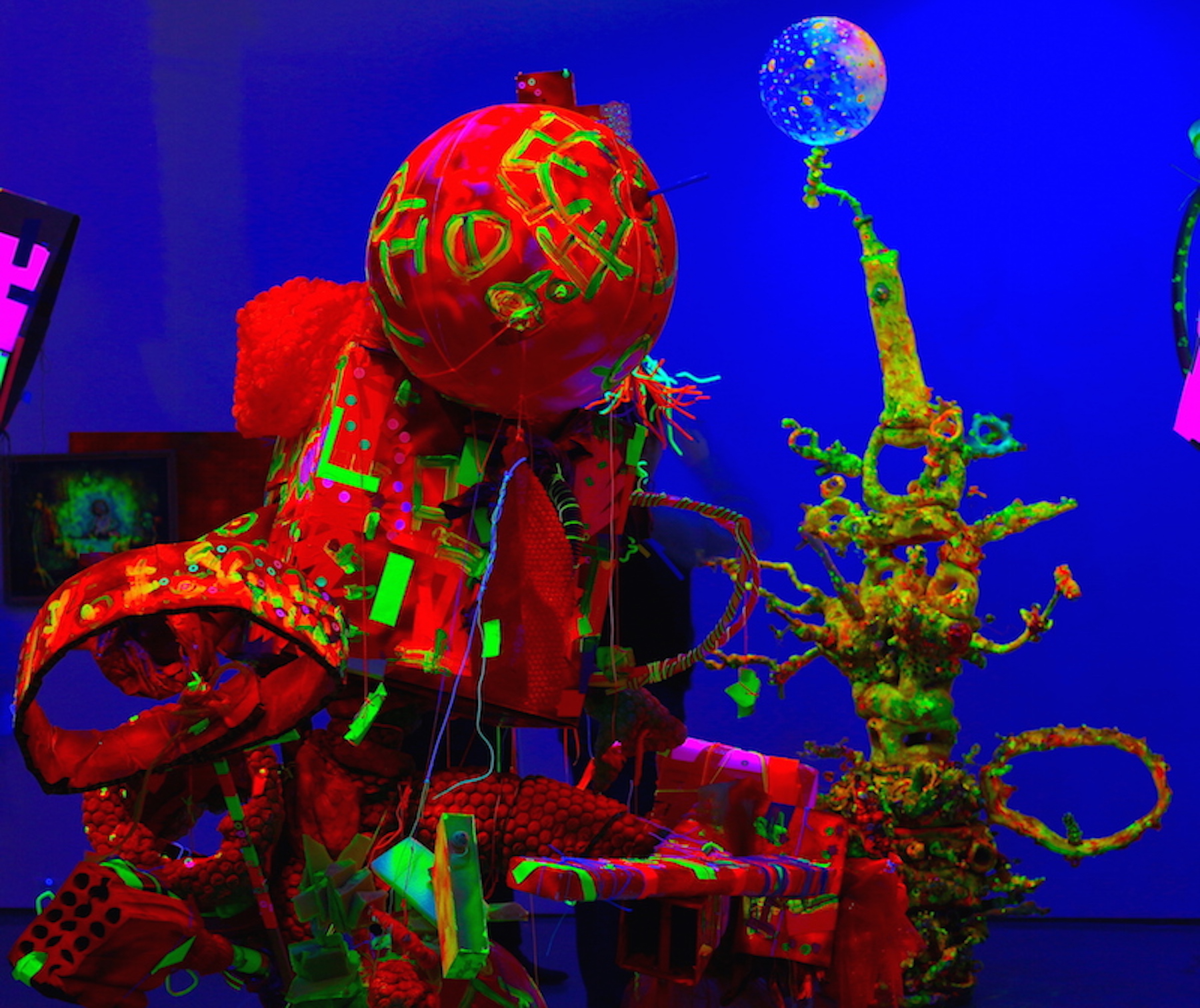
http://www.rafaelcorzo.com/
Clay is earth, earth is nature, and nature in my hands is art. Art is energy, an inherent force in my blood, the strength of my culture, relentlessly working with the desire to express, give, and share the adventure of creation. In consciousness and materiality where all possibilities already exist, clay is visceral audacity, innocent and savage in conception and evolution. There in every moment where you are, there will always be a place for continuity. Ceramics is a rational structure in a naughty skin. In an act of love, the grotesque is a sensibility anew, a synergy between the tumultuous and the well-behaved. Opened areas allow you to enter the intimate space where process and theory are captured and give birth to eclectic forms escaping gravity, expressing motion. Ceramics is aspiration and wild euphoria where harmony and rhythm can never have enough embellishments. And I am, seduced by density in ecstasy - a constellation of colors in a unifying palette celebrating life. In a constant state of creation and in a virtuous cycle, I dream of universality transcending ages. These are the genuine feelings and expansive energy vibrating inside the artist, a true essence. It is the frenzied pursuit of a vision, estoy aquí con fuerza. It is not a fantasy, I give myself with devotion looking for all beauty: compressed, unreal, ideal, ethereal. With this premise in the heart, and clarity in my mind, art will always be. Like birds looking for the stars on a journey so far the distance, I keep hope for and faith in a bright tomorrow: so in love with art, so in love with life, creating destiny.
MADE HERE Summer 2016
“MADE HERE Summer 2016” Austin Thomas, Taihwa Goh, Jeffery Meris
Guttenberg Arts Gallery is pleased to present “MADE HERE Summer 2016” a group exhibition of the current Artists in Residence; Austin Thomas, Tai Hwa Goh and Jeffery Meris. On view August 3, 2016 - September 6, 2016. The works included in MADE HERE were created during the artist’s residences this past summer. The title “MADE HERE” carries not only multiple definitions, but multiple conceptual meanings ranging from location to identity, the politics of materials and the historical nature of place. All of these new works deeply considered many of these issues and are only just the beginning points for deeper reflection.
Austin Thomas’ current work for MADE HERE focuses on a show of delicate prints, exploring patterns and the possibility of an idea. Pinned to the wall, her printslike her drawings, manifest Thomas’ continued dedication both to the stenciled form and to the independent life of paper. Here various types of stationery and other papers commingle with dots, rectangles, triangles, stripes and voids. Her carefully attenuated placement asks that we look at each piece on its own terms for what it is. Thomas suggests a subtler world, rich with nuance and precision, with enough room to insert our own narratives. This new print work is for aesthetic enjoyment and intellectual contemplation.
Throughout Tai Hwa Goh’s installations, the viewer will see the prolific use of traditional printmaking techniques. These have a unique luminosity through hand-waxing that carry through Goh’s images that are installed on various architectural elements. These images get obstructed and buried under layers of delicately waxed papers transmitting the echo of the image. The process of layering images intends to reflect the accumulation of memory and experiences, and thus represents impenetrability and vulnerability of human body, but, at the same time, recoverability and powerfulness of selfness. Through this exhibition, Goh becomes the extension of nature and nature becomes the extension of her body. Her images evolve from biological forms to landscape, describing the interaction between the inner and outer mass of human body. In the process of folding, cutting, flipping and overlapping printed materials, images are gradually transformed away from identifiable objects, taking on a naturalistic guise of their own, growing into space, posing questions about our accepted definition of printed works of art, as well as the idea of passage.
Jeffrey Meris’ continues his investigation and interest with economies of migration, real estate, bodies, space and identity. Through the use of constructed, found, ready-‐made and assembled objects, Meris alludes to a certain level of geopolitical permeability. This body of work is heavily shaped by Meris’ upbringing as a migrant from Haiti -‐living in the Bahamas-‐ where ‘they coming’ was more than often a derogatory slur to both indict the peasant like status of Haitian migrants and also reinforce the sub‐humanness of that community. ‘They’ assumes an ambiguous identity fluxing between the luxury tourist, the alien or the immigration officer. Coming from where? Going to where?
Exhibition: August 3, 2016 - September 6, 2016.; Opening Reception August 3, 7-9pm.
For more information please contact studio@guttenbergarts.org or 201-868-8585.
Guttenberg Art Gallery is free and open to the public by appointment. www.guttenbergarts.org
Thank you to our Fall 2016 Jurors
Martin Mazorra
Martin Mazorra is a Brooklyn based printmaker, working in the medium of woodcut and letterpress with imagery that combines humor and personal narrative. He is the founder of Cannonball Press, which has published affordable black and white prints since 1999.
Mary Birmingham
Mary Birmingham is Curator at the Visual Arts Center of New Jersey, where she has directed an ambitious program of contemporary art exhibitions since 2010. She began her career at the Whitney Museum, and for nine years was a member of the curatorial department of the Montclair Art Museum. From 2007 -2010, she was Director of Exhibitions at the Hunterdon Art Museum in Clinton, NJ. Birmingham received an MA in Art History from Hunter College, with a concentration in American Modernism. She has organized numerous exhibitions, and has written and lectured on a variety of topics in American and contemporary art. She is the author of Dynamic Impulse: The Drawings of Stuart Davis (2007) and co-author of Montclair Art Museum: Selected Works (2002).
Since 2010 Mary Birmingham has been Curator at the Visual Arts Center of New Jersey, where she directs an ambitious program of contemporary art exhibitions. She has previously worked at the Whitney Museum, the Montclair Art Museum, and the Hunterdon Art Museum. She has an MA in Art History from Hunter College, with a concentration in American Modernism. She has organized numerous exhibitions, and has written and lectured on a variety of topics in American and contemporary art.
Joe Burrascano
Have fun. Do great work. Make people smile.
Joe Burrascano is the founder and Executive Creative Director of Nathan Love in New York City. Since forming the studio in 2007, he has grown the company to be one of the premier commercial animation studios in the world, producing hundreds of projects for some of the world’s largest and most respected brands. Clients include but are not limited to Kellogg’s, Kraft, McGraw-Hill Education, McDonald's, Merc, NBC-Universal and Nickelodeon Studios.
With an emphasis on story and creating authentic, memorable characters, Burrascano’s personal pursuits expand beyond the studio and into the classroom. An active alumni at the School of Visual Arts in NYC, Joe serves on the Alumni Society board and is a faculty member in the Computer Art Department. There, he stresses the importance of story development and teaches young filmmakers the tools to produce their own films. He has also hosted workshops for multiple schools and organizations throughout manhattan, and the rest of the country.
